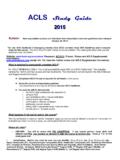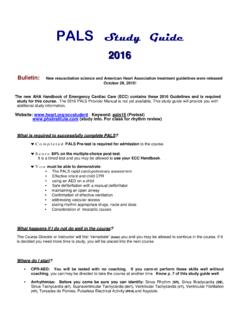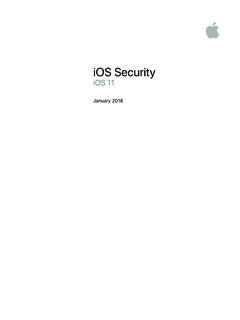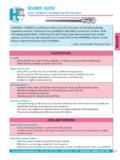Transcription of A GUIDE TO THE BUSINESS ANALYSIS BODY OF …
1 A GUIDE TO THE BUSINESS ANALYSIS BODY OF KNOWLEDGE v3 BABOK v3A GUIDE TO THE BUSINESS ANALYSISBODY OF KNOWLEDGE Complimentary IIBA Member Copy. Not for Distribution or Institute of BUSINESS ANALYSIS , Toronto, Ontario, Canada. 2005, 2006, 2008, 2009, 2015 International Institute of BUSINESS ANALYSIS . All rights and published 2005. Version Draft published 2006. Version Final published 2008. Version published 2009. Version published : 978-1-927584-03-3 Permission is granted to reproduce this document for your own personal, professional, or educational use. If you have purchased a license to use this document from IIBA , you may transfer ownership to a third party. IIBA members may not transfer ownership of their complimentary document is provided to the BUSINESS ANALYSIS community for educational purposes. IIBA does not warrant that it is suitable for any other purpose and makes no expressed or implied warranty of any kind and assumes no responsibility for errors or omissions.
2 No liability is assumed for incidental or consequential damages in connection with or arising out of the use of the information contained , the IIBA logo, BABOK and BUSINESS ANALYSIS Body of Knowledge are registered trademarks owned by International Institute of BUSINESS ANALYSIS . CBAP is a registered certification mark owned by International Institute of BUSINESS ANALYSIS . Certified BUSINESS ANALYSIS Professional, EEP and the EEP logo are trademarks owned by International Institute of BUSINESS is a registered trademark of The Open Group in the US and other Model Canvas is copyrighted by and released under Creative Commons is a registered trademark of Carnegie Mellon is a trademark of the Information Systems Audit and Control Association and the IT Governance Map is a registered trademark of the Buzan Agile Framework and SAFe are trademarks of Scaled Agile, is a registered trademark of The Open Group in the US and other Modelling Language and UML are trademarks of the Object Management Framework for Enterprise Architecture is a trademark of the Zachman Institute for Framework challenge to the status or ownership of these or any other trademarked terms contained herein is intended by the International Institute of BUSINESS inquiries regarding this publication, requests for usage rights for the material included herein, or corrections should be sent by email to IIBA Member Copy.
3 Not for Distribution or of ContentsChapter 1: of the BABOK GUIDE is BUSINESS ANALYSIS ? is a BUSINESS Analyst? of the BABOK GUIDE 3 Chapter 2: BUSINESS ANALYSIS Key BUSINESS ANALYSIS Core Concept Model Terms Classification Schema and Designs 19 Chapter 3: BUSINESS ANALYSIS Planning and BUSINESS ANALYSIS Approach Stakeholder Engagement BUSINESS ANALYSIS Governance BUSINESS ANALYSIS Information Management BUSINESS ANALYSIS Performance Improvements 47 Table of ContentsiiComplimentary IIBA Member Copy. Not for Distribution or 4: Elicitation and for Elicitation Elicitation Elicitation Results BUSINESS ANALYSIS Information Stakeholder Collaboration 71 Chapter 5: Requirements Life Cycle Requirements Requirements Requirements Requirements Changes Requirements 95 Chapter 6: Strategy Current State Future State Risks Change Strategy 124 Chapter 7: Requirements ANALYSIS and Design and Model Requirements Requirements Requirements Requirements Architecture Design Options Potential Value and Recommend Solution 157 Chapter 8: Solution Solution Performance Performance Measures Solution Limitations Enterprise Limitations Actions to Increase Solution Value 182 Chapter 9: Underlying Thinking and Problem Solving 188 Table of ContentsiiiComplimentary IIBA Member Copy.
4 Not for Distribution or Characteristics Knowledge Skills Skills and Technology 211 Chapter 10: and Evaluation Criteria Management Scorecard and Market ANALYSIS Capability ANALYSIS Cases Model Canvas Rules ANALYSIS Games Modelling Dictionary Flow Diagrams Mining Modelling ANALYSIS Modelling ANALYSIS ANALYSIS Groups Decomposition ANALYSIS Tracking Learned and Key Performance Indicators (KPIs) Mapping Requirements ANALYSIS Modelling 308 Table of ContentsivComplimentary IIBA Member Copy. Not for Distribution or ANALYSIS Modelling ANALYSIS and Management and Permissions Matrix Cause ANALYSIS Modelling Diagrams List, Map, or Personas Modelling or Questionnaire ANALYSIS Cases and Scenarios Stories Assessment 363 Chapter 11: Agile Perspective BUSINESS Intelligence Perspective Information Technology Perspective BUSINESS Architecture Perspective BUSINESS Process Management Perspective 424 Appendix A: Glossary 441 Appendix B: Techniques to Task Mapping 457 Appendix C: Contributors 473 Appendix D: Summary of Changes from BABOK GUIDE v 483vComplimentary IIBA Member Copy.
5 Not for Distribution or was founded in Toronto, Canada in October of 2003 to support the BUSINESS ANALYSIS community by: creating and developing awareness and recognition of the value and contribution of the BUSINESS analyst, defining the BUSINESS ANALYSIS Body of Knowledge (BABOK ), providing a forum for knowledge sharing and contribution to the BUSINESS ANALYSIS profession, and publicly recognizing and certifying qualified practitioners through an internationally acknowledged certification Body of Knowledge Committee was formed in October of 2004 to define and draft a global standard for the practice of BUSINESS ANALYSIS . In January of 2005, IIBA released version of A GUIDE to the BUSINESS ANALYSIS Body of Knowledge (BABOK GUIDE ) for feedback and comment. That version included an outline of the proposed content and some key definitions. Version was released in October of 2005, with draft content in some knowledge areas.
6 Version , which included detailed information regarding most of the knowledge areas, was published in draft form in June of 2006 and updated to incorporate errata in October of Body of Knowledge Committee developed version of A GUIDE to the BUSINESS ANALYSIS Body of Knowledge (BABOK GUIDE ) with the guidance of expert writing teams, and feedback garnered from expert, practitioner, and public reviews. Version introduced such concepts as the Requirements Classification Schema and the Input/Output models. Version was published in 2009 and became the globally recognized standard for the practice of BUSINESS the publication of version , IIBA sought out a number of recognized experts in BUSINESS ANALYSIS and related fields and solicited their feedback on the content of that edition. The Body of Knowledge Committee used these comments to plan the vision and scope of this revision.
7 The Body of Knowledge Committee worked with teams of expert writers to revise and update the content. The revised draft of A GUIDE to the BUSINESS ANALYSIS Body of Knowledge (BABOK GUIDE ) was reviewed by teams of both expert and practitioner reviewers. The Body of Knowledge Committee used the feedback provided to further enhance and refine the text and then made the content available to the BUSINESS ANALYSIS community for review in 2014. The thousands of items of feedback from this public review were used to further revise the text to form A GUIDE to the BUSINESS ANALYSIS Body of Knowledge (BABOK GUIDE ) version goal of this revision was to: incorporate new concepts and practices in use since the last revision, address the broadening and evolving scope of the profession, incorporate lessons learned from practitioners who have worked with the current version, improve the readability and usability of the GUIDE , improve the consistency and quality of text and illustrations, and improve consistency with other generally accepted standards relating to the practice of BUSINESS IIBA Member Copy.
8 Not for Distribution or major changes in this release include: the inclusion of the BUSINESS ANALYSIS Core Concept Model (BACCM ), the expanded scope of the role of BUSINESS ANALYSIS in creating better BUSINESS outcomes, the inclusion of Perspectives which describe specialized ways in which BUSINESS ANALYSIS professionals provide unique value to the enterprise, new and expanded Underlying Competencies to better reflect the diverse skill sets of the BUSINESS analyst, and new techniques that have emerged in the practice of BUSINESS publication supersedes A GUIDE to the BUSINESS ANALYSIS Body of Knowledge (BABOK GUIDE ) version BABOK GUIDE contains a description of generally accepted practices in the field of BUSINESS ANALYSIS . The content included in this release has been verified through reviews by practitioners, surveys of the BUSINESS ANALYSIS community, and consultations with recognized experts in the field.
9 The data available to IIBA demonstrates that the tasks and techniques described in this publication are in use by a majority of BUSINESS ANALYSIS practitioners. As a result, we can have confidence that the tasks and techniques described in the BABOK GUIDE should be applicable in most contexts where BUSINESS ANALYSIS is performed, most of the BABOK GUIDE should not be construed to mandate that the practices described in this publication should be followed under all circumstances. Any set of practices must be tailored to the specific conditions under which BUSINESS ANALYSIS is being performed. In addition, practices which are not generally accepted by the BUSINESS ANALYSIS community at the time of publication may be equally effective, or more effective, than the practices described in the BABOK GUIDE . As such practices become generally accepted, and as data is collected to verify their effectiveness, they will be incorporated into future editions of this publication.
10 IIBA encourages all practitioners of BUSINESS ANALYSIS to be open to new approaches and new ideas, and wishes to encourage innovation in the practice of BUSINESS would like to extend its thanks and the thanks of the BUSINESS ANALYSIS community to all those who volunteered their time and effort to the development of this revision, as well as those who provided informal feedback to us in other IIBA Member Copy. Not for Distribution or GUIDE to the BUSINESS ANALYSIS Body of Knowledge (BABOK GUIDE ) is the globally recognized standard for the practice of BUSINESS ANALYSIS . The BABOK GUIDE describes BUSINESS ANALYSIS knowledge areas, tasks, underlying competencies, techniques and perspectives on how to approach BUSINESS of the BABOK GuideThe primary purpose of the BABOK GUIDE is to define the profession of BUSINESS ANALYSIS and provide a set of commonly accepted practices. It helps practitioners discuss and define the skills necessary to effectively perform BUSINESS ANALYSIS work.










